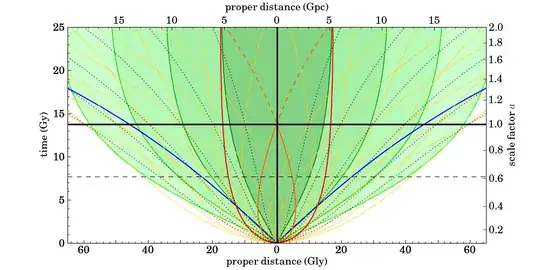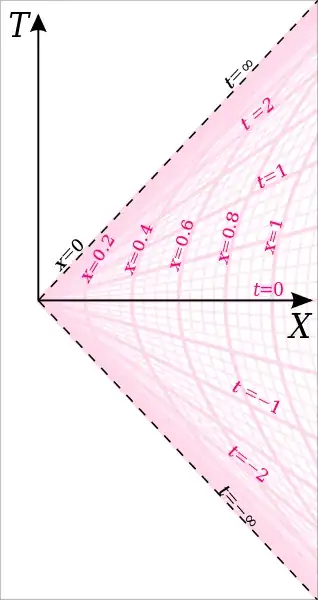One should be careful not to get confused, because in cosmology we can define two horizons.
The first is called the cosmic event horizon, defined as follows: if a galaxy outside the event horizon emits light today, it will never reach us. That is, we will never observe in the future what that galaxy looks like today (although we might observe today what the galaxy looked like in the past). This also means that once a galaxy is outside our event horizon, it will stay outside: galaxies can never enter our cosmic event horizon. But galaxies can exit the event horizon. In fact, eventually all galaxies outside our local cluster will exit our event horizon.
But you're asking about another horizon, the so-called cosmic particle horizon. This is our observable universe: the region of space from which photons have been emitted that are reaching us today. Galaxies cannot leave our observable universe: once they are inside the horizon, they stay inside (although their redshift goes towards infinity as the universe gets older, so they do become harder to detect). But galaxies currently outside the particle horizon (up to a certain distance) can enter it in the future.
The figures below will illustrate this. The central vertical black line is our world line, the horizontal black line is the current cosmic age; the thick red line is the cosmic event horizon, the thick blue line is the cosmic particle horizon; the yellow lines are light rays, and galaxies move on the dotted black lines.
You can see that light rays inside the event horizon bend towards us, so that we will observe those photons when they cross our worldline. You also see that galaxies can exit the event horizon (but not enter) and galaxies can enter the particle horizon (but not exit), as time goes on.
Our universe is evolving towards a De Sitter space, and which has the property that the distance of the event horizon becomes constant.

We can plot the same figure in co-moving coordinates, i.e. a coordinate system that expands along with the universe. Galaxies have fixed co-moving distances, so their worldlines become vertical dotted lines. And with appropriate scaling of the time axis, light rays move on 45° straight lines.
This figure illustrates the complementary nature of both horizons. In a sense, they are each others mirror image. Note also that the co-moving distance of the particle horizon increases to a finite value at $t=\infty$. Galaxies beyond this maximum distance will never be observable.

For more technical details, see
Can space expand with unlimited speed?
What is the theoretical limit for farthest we can see back in time and distance?
Finally, as others have remarked, these horizons are observer dependent. Every observer in the universe will experience his own event horizon and particle horizon.


